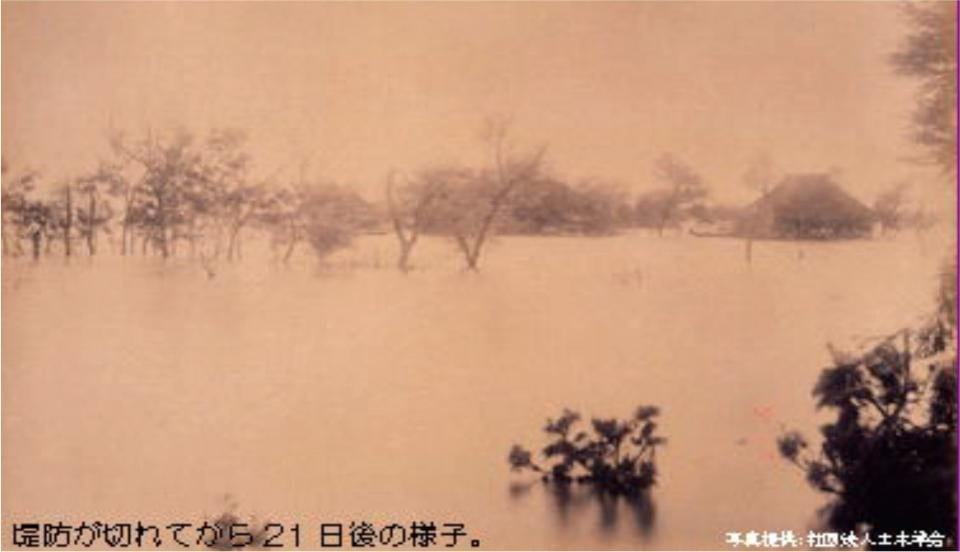Engineering the Lower Shinano River in northeastern Japan to prevent floods such as those of 1896 ironically contributed to increased loss of property and expanded risk of other flood and tsunami damage as the region developed over the next century.
On 26 July 1896, after days of rain, the waters of the Shinano River broke through the dikes at Yokota village (southwest of Niigata City) on the Echigo Plain, causing massive flooding. Stagnant water soaked the land for weeks. That event sparked the construction of an overflow channel first proposed in the 1730s, the Okotsu Diversion Channel (Okotsu Bunsui). Today many residents regard it so highly that they have proposed nominating the entire Echigo Plain as a UN cultural heritage site…
This is an abstract for an article appearing in the online journal Arcadia. To read the full text of this article, click here.

Suggested Readings:
Brown, Philip C. “Forum: Japan Before Disaster Studies. Reverse Flow. The Role of Built Environments in Shaping Disaster.” Technology and Culture 58, no. 1. (2017):170–181.
Proctor, Robert. “Agnotology: A Missing Term to Describe the Cultural Production of Ignorance [and Its Study].” In Agnotology: The Making & Unmaking of Ignorance, edited by Robert and Londa Schiebinger Proctor, 1–33. Stanford, CA: Stanford University Press, 2008.
Related:
Gürbe River Flood:: Melanie Salvisberg (Switzerland)
Philip C. Brown is an expert in Early Modern and Modern Japanese History with interests in the history of technology, environmental history and state-society relations from the 15th to 19th centuries. He recently published a monograph on joint arable land holding systems (warichi), Cultivating Commons: Joint Ownership of Arable Land in Early Modern Japan, University of Hawai’i Press, 2011. He spent 2008 in Niigata, Japan, starting a new long-term project that examines the development of civil engineering, state modernization and flood control in 19th and 20th century Japan. To support the latter research he has recently received a Fulbright-Hays Faculty Research Award, a Japan-US Friendship/NEH Fellowship, and a National Science Foundation Scholars Award for $223,000 under the Science and Society Program. His previous work has focused on the formation of baronial domains and their relationship to both local populations and the Early Modern Japanese state.
***
The Teach311 + COVID-19 Collective began in 2011 as a joint project of the Forum for the History of Science in Asia and the Society for the History of Technology Asia Network and is currently expanded in collaboration with the Max Planck Institute for the History of Science(Artifacts, Action, Knowledge) and Nanyang Technological University-Singapore.
![[Teach311 + COVID-19] Collective](https://blogs.ntu.edu.sg/teach311/files/2020/04/Banner.jpg)